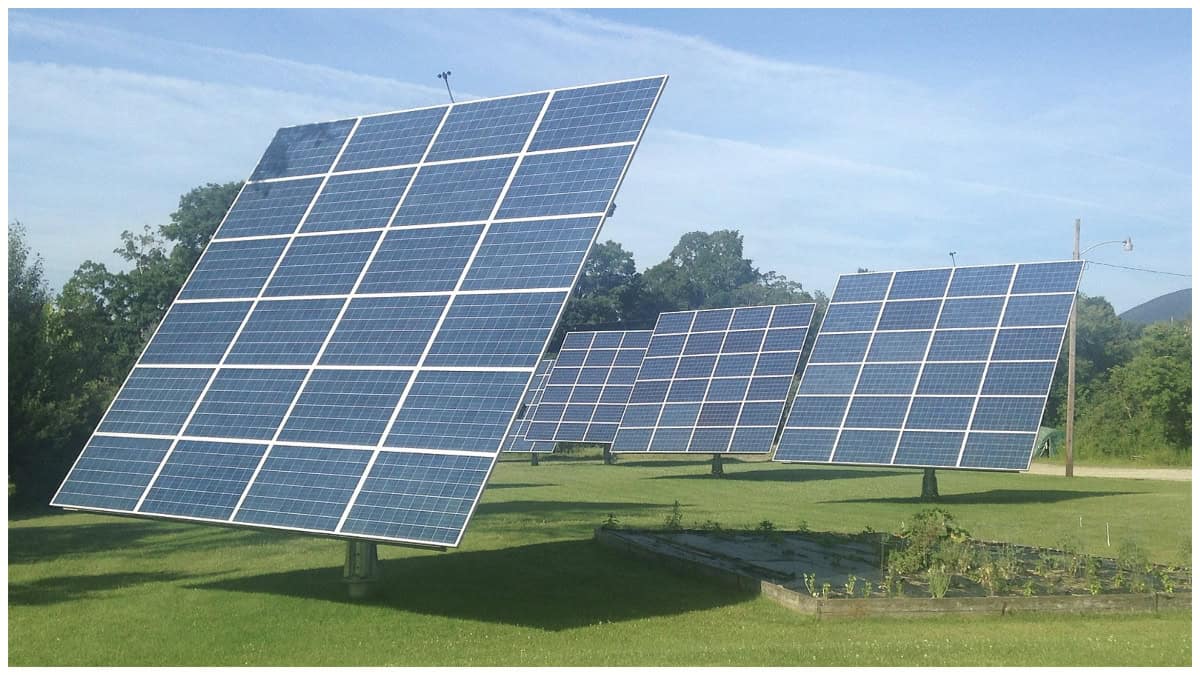The PSC is now considering the issue of net metering, which is when electric utilities pay homeowners and property owners for the solar energy that the homeowner delivers to the utility.
All utility companies, except MGE, pay a tiny fraction of the value of that solar electricity to the solar provider (property owner). Up until recently, MGE paid at a ratio of 1:1, i.e. paid $1.00 for $1.00, which is to say, MGE paid the same rate for the solar electricity delivered to MGE as MGE charged for electricity.
Good for them! But recently even MGE announced that they would reduce the reimbursement rate for new solar electricity providers as well.
Investment in solar is not financially feasible for homeowners and property owners (even with tax credits and grants) without the 1 for 1 reimbursement rate.
This is how solar really works: Solar panels produce a surplus of electricity during the peak sunny months in Wisconsin, July and August, and also produce the surplus primarily during the hottest hours in the afternoon.
We find that those peak hours for solar produce all of the surplus for the year in the case of our own solar panels. (We installed the largest solar array on an apartment building east of the Mississippi River when it was installed, and we have more solar on the rooftops of our properties than probably any other private developer in the state, in addition to having built the first geothermal system for a private office building in Wisconsin.)
Power plants are sized to handle peak demand, which occurs in the summer months and during the hottest times of the day. In other words, utilities have a surplus of power plant capacity for about ten months a year and for most hours of the day, but up until now that capacity has be there, built, and paid for by all of us to cover peak demand.
Fortunately, solar panels produce the most electricity during those same peak times and days, which means that solar delivered to the utility can reduce the need for expensive capital investments associated with expanding power plants’ peak capacity – capital investments that consumers of electricity have to pay for through increased electric rates.
Without a 1:1 ratio of reimbursement rate for solar electricity to property owners, the feasibility is not there. Why? Because when an owner buys and installs a solar array, even with the tax credits and grants, the cost does not pay for itself – i.e. the solar produced, when reimbursed at pennies on the dollar, does not pay for the debt service associated with the loan that was taken on to pay for the solar installation.
Solar is only feasible in MGE territory if they keep reimbursing at a 1:1 ratio, because the surplus electricity produced creates a credit with MGE that can be used throughout the year to pay for electricity when the solar panels don’t produce a surplus, but now MGE wants to take that away too.
Think of it this way – if the utilities value electricity at $1.00 (I made up that number), then that is the market value of the electricity and they should pay you $1.00, but instead the utilities are saying that electricity is worth $1.00 when they sell it to you, but it’s worth only pennies of that when they buy it from you.
I call b.s. on that. The truth is the electricity that utilities buy from you is worth a hell of a lot more than what they charge. Why? Because the cost of expanding a power plant (especially those are landlocked like those inside cities) is enormous and building a new power plant is extremely expensive.
By having the utilities pay you for your surplus solar electricity, the utility can save the capital cost of expanding their plants or building new ones because your solar electricity takes pressure off the peak demand need of power plants. When we feed electricity to the power plant during those peak hours and peak months, it leads to the smoothing out the curve of the power graph, meaning there is no need to build to peak demand anymore.
Instead, power plants could operate at steady demand and use the surplus solar electricity to feed their peak demand. A win-win for everyone!
Oh, it gets better. With solar coming in from all those homes and properties during peak demand, that peak demand is satisfied with a smaller power plant and less risk of a failure too, so that means less need to build those giant steel, high-powered electric distribution poles all over our cities and rural landscape. Solar can also act as a back up vs building another distribution line solely as a back up to the power grid. If a bad-actor attacks our power grid, your solar still produces electricity!
But wait! Why are utility companies fighting so hard against ‘net metering’? Because, yes, you guessed it, money. Not that money is bad, but in this case, because the PSC guarantees a return on investment to the utility companies for every single dollar invested in new construction.
The utilities have a built-in incentive to build, build, build. And yes, they have an incentive to build those giant solar farms, because the utility gets a guaranteed return on that investment too! And without those giant solar farms, (if every new subdivision becomes its own solar farm) there is no need for those giant distribution poles to deliver electricity to the power plant where it has to be redistributed to the grid and consumers.
Unbelievably, the utilities have the nerve to charge you a premium for their solar energy when it’s costing them less! Worse, the utilities are claiming that when they pay a solar provider for their electricity, that it some how magically costs consumers of their electricity more.
Wow. That’s some misinformation campaign, and I think they call that chutzpah. If the utilities were honest about the issue, they would include the massive cost of their solar farms, the distribution network, and their power plant cost in their analysis – and compare that to property owners providing solar to their utility. There are massive savings to a utility when property owners provide solar to the power plant.
For the utilities, destroying your ability to finance solar is their way of guaranteeing a return on investment and charging you more for solar than their standard rate, and also of maintaining a monopoly on energy in their territory.
This is why it’s so important that the PSC establish a fixed ratio of 1:1 for reimbursement of solar electricity to property owners for their surplus electricity delivered to the power plant. Call, email or write to the PSC and ask the PSC to support a ratio of 1:1 for reimbursement of solar power, otherwise known as net metering.
Wisconsin Right Now is a news organization focused on covering the news from a conservative point of view, in particular on politics and policy issues through analysis and opinions, and is protected by the first amendment of the United States constitution. WRN and the columnist does not make endorsements of candidates or urge a vote for or against any candidate or issue. On October 18 and November 23, 2023 Donald Trump tweeted out on Trump’s Truth Social account T. Wall’s October 6th column on Trump’s property valuations. T. Wall holds a degree from the UW in economics and an M.S. in real estate analysis and valuation and is a real estate developer. Disclaimer: The opinions of the writer are not necessarily those of this publication or the left!


![Governor Caught Playing Politics with Brillion Residents’ Lives & Livelihood [COLUMN] ron tusler](https://www.wisconsinrightnow.com/wp-content/uploads/2025/07/MixCollage-15-Jul-2025-03-35-PM-9568-265x198.jpg)



![Protecting Portland: No Good Deed Goes Unpunished [REVIEW]](https://www.wisconsinrightnow.com/wp-content/uploads/2025/07/portland-265x198.jpg)





